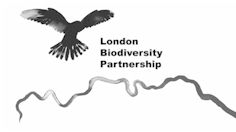Site Recording Guidelines

This note provides the London Biodiversity Partnership’s guidance on dealing with the geographic location of Biological records. Because of the variety of taxa, methods for recording them, and uses for the records there is no single ideal recipe for describing locations. However, records are more useful the smaller and more homogeneous is the ‘site’ from which they come.
For many purposes, especially for rare or unusual occurrences and surveys of private gardens, a full six-figure grid reference is encouraged. This identifies the location to within the nearest 50 metres. Such precise locations can be readily associated with larger areas (such as grid squares or ‘sites’ and ‘sub-sites’), but the converse is not the case.
For postal surveys and other records associated with the address, e.g. private garden surveys, the full postcode can be used as a location that is nearly as precise as a full grid reference, and more likely to be known. Postcodes do not cover anything other than residential areas, and are therefore not relevant for recording in open spaces. Postcode sectors are not satisfactory, as on average, there are only 26 per borough.
There are occasions when lists of species are obtained for wider areas. These larger sites should be appropriate for the purpose. For example, the sensible size for higher plants may be smaller than that for birds. When adopting such larger sites it is desirable, where possible, to reach a local agreement. The aim is to prevent inadvertent disagreement on site and sub-site boundaries where agreement can meet the purposes.
As a default, where there is no more sensible local decision, the Partnership has recommended that the present Greater London Authority’s (GLA) wildlife sites are used. This involves using their site names, codes, grid references and boundaries. The site details and boundaries will soon be available, on completion of the contract between the GLA and London Wildlife Trust. As Sites of Importance for Nature Conservation (SINCs) are recommended for protection in statutory planning, it is important that they are kept up to date. For this reason, the present sites will not necessarily remain unchanged.
For recording on rivers, the default will be based on the Environment Agency’s river corridor sites. These will probably be split into reaches or 500m stretches for each bank.
For other features, where they fall outside of wildlife sites, the default will be the GLA’s wildlife habitat survey parcels, grid references, boundaries and codes. These parcels may also sometimes serve as sub-sites of the GLA wildlife sites.
So, locations should follow this hierarchy, in order of preference:
|
Order |
Location |
Description |
|
1 |
Six-figure grid reference. |
e.g. St Paul’s Cathedral is 320811. |
|
2 |
Full postcodes. |
Only for information related to the postal area, such as private garden and stag beetle surveys, e.g. SW19 7HR. |
|
3 |
Locally decided small, homogeneous site. |
e.g. Management parcel 1 of Sydenham Hill Wood, or Leg of Mutton Pond Richmond Park. |
|
4 |
GLA Site of Importance for Nature Conservation |
The site name, site code, grid reference and boundary, e.g. Mitcham Common, M093, 290680. Habitat parcels within these sites may become sub-sites, e.g. Wimbledon Park Lake is parcel 22xxx/y. |
|
5 |
Other designated site boundaries. |
May become a subsite of the GLA SNCI. For example, SSSI and LNR boundaries, where they are smaller than the Site of Importance for Nature Conservation, e.g. Richmond Park SSSI is smaller than the SNCI. |
Written by Dr Dave Dawson, Greater London Authority, and Mandy Rudd, London Wildlife Trust
Back to Species Audit